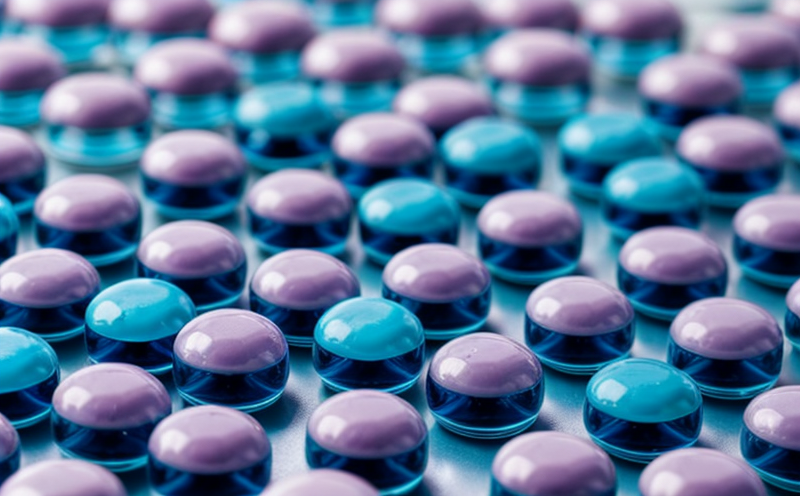JP XV Microbial Limit Testing in Pharmaceutical Products
The Japan Pharmacopoeia (JP) XV has established stringent guidelines for microbial limit testing which is a critical aspect of ensuring the safety and efficacy of pharmaceutical products. This process ensures that any potentially harmful microorganisms present do not exceed safe levels, thereby safeguarding public health.
Microbial limit tests are particularly important in the development stages of new drugs as well as during ongoing quality assurance checks throughout production cycles. The goal is to minimize contamination risks from bacteria, fungi, and other pathogens that could compromise product integrity or cause adverse effects on consumers.
In this testing procedure, samples from various parts of a pharmaceutical product such as raw materials, intermediates, final formulations, packaging materials, etc., are inoculated onto appropriate media designed to support microbial growth. Following incubation periods specified by the JP XV guidelines, colonies are counted and compared against predefined thresholds.
This type of testing plays an essential role in maintaining regulatory compliance with international standards like those set forth by the United States Pharmacopeia (USP), European Pharmacopoeia (EP), and International Conference on Harmonisation (ICH). By adhering to these stringent criteria, manufacturers can demonstrate their commitment to producing safe medicines.
Let’s delve deeper into some key aspects of performing JP XV microbial limit tests:
- Sample Preparation: Properly collecting and preparing samples is crucial for accurate results. Samples should be handled under sterile conditions, ensuring no contamination occurs during collection or processing.
- Inoculation Media: Specific media must be used depending on the type of microorganism being targeted (e.g., nutrient agar for bacteria).
- Incubation Times: Depending upon the type of organism, incubation times vary; typically ranging from 24 hours to up to seven days.
- Counting Colonies: Once incubated, colonies are visually counted and compared against prescribed limits.
The results obtained from these tests provide valuable insights into the cleanliness of manufacturing environments and help identify potential issues early on. This proactive approach helps manufacturers maintain high standards of hygiene and reliability throughout their production processes.
By incorporating rigorous microbial limit testing protocols into their operations, pharmaceutical companies can ensure they meet all regulatory requirements while also enhancing consumer confidence in their products.
Applied Standards
The Japan Pharmacopoeia XV provides comprehensive guidelines for conducting microbial limit tests. These standards are widely recognized and utilized globally due to their strict criteria aimed at ensuring product safety. Specifically, Chapter XVIII of the JP XV outlines detailed procedures and acceptable limits for various types of microorganisms.
Some key elements include:
- Bacterial Count Limits: Maximum allowable counts per gram or milliliter based on sample type.
- Fungal and Yeast Counts: Similar limits apply but may differ slightly depending on the product.
- Viable Particle Analysis: Methods for detecting particulate matter that might contain viable microorganisms.
The use of these standardized methods ensures consistency across laboratories, facilitating accurate comparisons between different batches or lots of a given drug. Compliance with such stringent regulations not only protects consumers but also enhances brand reputation among healthcare professionals and patients alike.
International Acceptance and Recognition
The Japan Pharmacopoeia XV's microbial limit testing procedures have gained widespread acceptance within the pharmaceutical industry worldwide. Many countries recognize these standards as equivalent to their own national pharmacopeias, allowing cross-border trade in compliant products.
Incorporating JP XV guidelines into your quality management system demonstrates a commitment to excellence and adherence to global best practices. This can be particularly beneficial when seeking certification from organizations like the World Health Organization (WHO) or engaging with international regulatory bodies such as the U.S. Food and Drug Administration (FDA).
Additionally, compliance with these standards may expedite market entry into Japan and other nations where this pharmacopoeia is officially recognized. It also fosters trust among stakeholders, including healthcare providers who rely on reliable data when prescribing medications.
Environmental and Sustainability Contributions
Conducting thorough microbial limit tests contributes positively to environmental sustainability efforts by ensuring that pharmaceutical manufacturing processes are as clean and efficient as possible. By minimizing contamination risks through rigorous testing, companies reduce waste and improve resource utilization rates.
The reduction of unnecessary rejections during production translates into lower energy consumption and reduced chemical usage throughout the supply chain. Moreover, maintaining high hygiene standards helps prevent unintended releases of hazardous substances into natural environments.
Through adherence to stringent microbial limit testing protocols outlined in the JP XV, manufacturers contribute significantly towards creating safer products while promoting sustainable practices that benefit both society and the planet.





